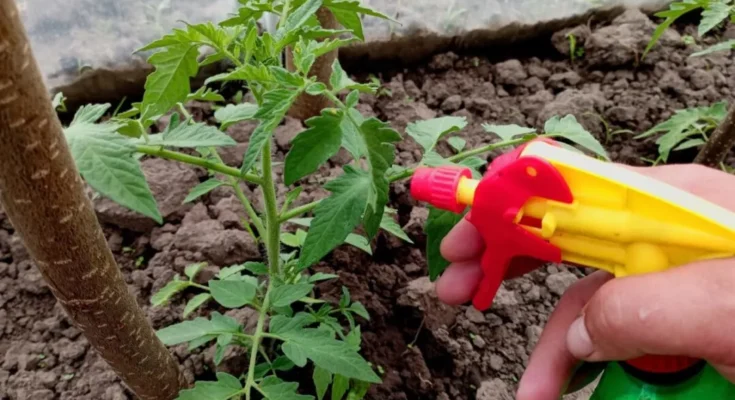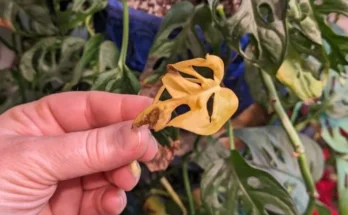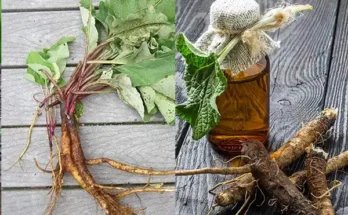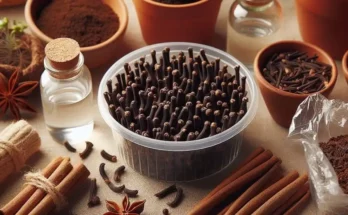Every plant you grow in your garden needs exactly 17 essential nutrients to be healthy, vigorous, and productive. We supply nutrients through the soil by applying amendments like compost and fertilizing with nutrient-rich drenches. From the soil, plant roots interact with microbes and take up all the macro and micronutrients they need.
Recently, foliar feeding has been recommended as a way to deliver nutrients to plants fast. By applying liquid fertilizers directly to plant leaves, the thinking goes, we can bypass the slowness of the root system and get nutrients into plants much more quickly. What’s more, some foliar fertilizer products claim to increase crop productivity by up to 20% over nutrients taken up through the soil.
So much of the buzz around foliar feeding is based on misinformation and marketing hype.
The idea for feeding plants nutrients through the foliage goes back to research conducted at Michigan State University in the 1950s. The use of radioactive tracers attached to certain essential minerals was an important step toward understanding how nutrients move within plant tissues. It also identified leaves as a mode of entry for plants to absorb nutrients.
From this discovery, many more studies have been completed on the effect foliar feeding has on crop quality and yields. The results have been underwhelming. To date, there’s very little evidence for the claim that solely fertilizing plants with nutrient sprays will produce yields over and above what nutrient-rich soils can provide.
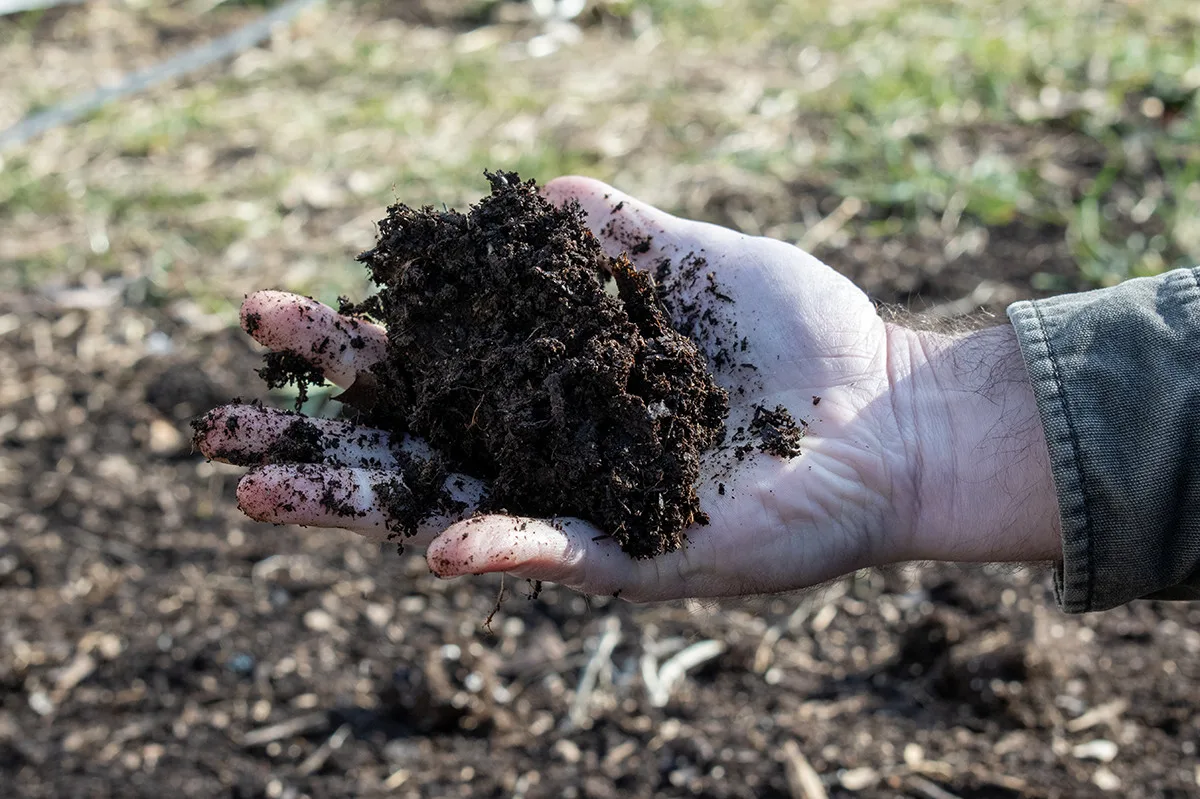
There really isn’t a substitute for healthy soil. The roots will always be the most effective and efficient way to fulfill the nutritional needs of your vegetable garden.
But with that being said, there are specific situations where foliar feeding can be quite useful. When you need to quickly correct a nutrient deficiency or give your plants a punch of growth, it’s a handy trick to keep in your back pocket.
8 Things to Know Before Foliar Feeding Plants in Your Garden
Foliar feeding can be great for supplementing your garden’s nutritional requirements – but it has a lot of limitations:
1. The Leaves Aren’t Designed to Take Up Nutrients
The plant root system is the primary organ for absorbing water and nutrients, and it does this job exceedingly well. The roots are capable of taking up large quantities of nutrients and distributing them efficiently throughout the leaves, stems, shoots, flowers, and fruits of the plant.

The leaves, on the other hand, are specialized for photosynthesis. Green foliage captures sunlight, which provides the energy necessary to produce carbohydrates and fuel the exchange of gases. Tiny pores on the underside of leaves, called the stomata, allow plants to take in carbon dioxide from the atmosphere and release it back as oxygen.
As a backup system, the leaves do offer an alternative pathway for nutrient uptake. When root system functioning is impaired or the soil is depleted, plant foliage can obtain nutrients from rainwater and the air to survive.
While plants are capable of absorbing nutrients through foliage, they can only do so in much smaller quantities compared to the roots. It’s estimated that only 15 to 20% of foliar fertilizers actually make their way through the leaf surface and into the tissues of the plant.
2. Nutrients are Absorbed Through Micropores in the Leaf Cuticle

It was once thought that the tiny pores of the leaf stomata were the entry point for nutrients applied to the foliage. Newer research suggests the more likely route is through the micropores of the leaf cuticle.
The leaf cuticle is a thick and waxy protective film that covers the entire leaf surface. Its function is to prevent excessive water loss and protect plants from pathogens and pests. Though this physical barrier is meant to keep water in and contaminants out, it’s covered in extremely minute pores. These are less than one nanometer in diameter and have a leaf surface density of 10 billion pores per cubic centimeter.
Despite their high volumes, the cuticular pores are so tiny they allow only small amounts of water and nutrients into the underlying plant tissue. To be effectively absorbed, foliar fertilizers need to be on the leaves, in liquid form, for as long as possible. For this reason, it’s recommended to spray plants in the evening so that leaves will remain wet overnight.
3. Certain Nutrients Are More Readily Absorbed than Others
As ions, liquid nutrients can gain entry into the underlying plant tissues through the teeny-tiny micropores of the leaf cuticle. But these pores also happen to be lined with a negative electric charge.
Like magnets, opposite charges attract, and like charges repel. And that means nutrient ions with a positive charge will be absorbed better than nutrient ions with a negative charge.

Nitrogen (ammonia or urea forms), potassium, and magnesium have a positive charge and are the nutrients most readily absorbed through the foliage. These nutrients are taken up in most plants in about 12 hours.
All other nutrients may require several days of wetting and re-wetting the leaves to be absorbed. Phosphorus, sulfur, and molybdenum are some of the slowest to get taken in through the micropores because they carry a negative charge. Due to the forces of repulsion, these nutrients will have a much more challenging time entering the plant through the leaves.
4. Some Nutrients Will Be Immobile
Nitrogen, potassium, and magnesium are some of the more readily absorbed foliar nutrients since they are composed of smaller molecules and carry a lesser positive charge. Once they are taken up through the leaf cuticle, they are fully mobile and will travel through the plant’s vascular system to buds, flowers, and fruits.
Nutrients with a strong positive charge or a larger molecule size will be fairly immovable and stay close to where they were applied to the leaf surface.
Calcium, iron, manganese, copper, and zinc are immobile foliar nutrients that adhere to the negative-charged cuticle like glue. Instead of moving around to various plant parts on as as-needed basis, these nutrients are better used to fix localized deficiencies or at targeted times to boost specific stages of growth.
5. Foliar Feeding Can Cause Leaf Burn
Foliar fertilizers work best when applied to freshly emerged growth. As plants mature, the waxy leaf cuticle thickens, making it significantly more difficult for liquid nutrients to be absorbed. Younger foliage is tender and new and hasn’t had a chance to toughen up yet.
Using foliar fertilizers on new growth carries the risk of leaf burn, or phytotoxicity. The excessive use of concentrated nutrient solutions can cause the foliage to turn brown, curl and wither, then drop from the plant. Although plants of any age can be affected by leaf burn, young and tender growth is most susceptible.

Leaf burn is more likely to occur with synthetic foliar fertilizers that are high in salts. As the water evaporates, the salts are left behind on the leaf. The salts draw water out from the leaves and dehydrate the foliage.
6. Overuse of Foliar Fertilizers Can Imbalance Your Soil
Nutrients sprayed over a wide area will drip from the leaves and onto the surrounding soil. Since it’s usually recommended to apply foliar feeds repeatedly, spraying indiscriminately in this way has the very real potential of creating a brand new set of problems in the vegetable garden.
Between applications to the foliage and the soil, the additional influx of nutrients can rise to levels that are toxic to plant life. And an excess of one nutrient can lead to deficiencies in other nutrients, in what’s known as nutrient antagonism.
High levels of nitrogen interfere with the uptake of potassium; too much potassium limits the availability of magnesium, and vice versa; excessive calcium blocks phosphorus, potassium, magnesium, boron, iron, manganese, and zinc.
The symptoms of over-fertilization look remarkably similar to nutrient deficiencies – yellowing, wilting, leaf and flower drop. It’s quite difficult to tell the difference by visual inspection alone.
Nutrient toxicities can be avoided by spraying plants individually, rather than hosing down entire rows. Sprays that produce the smallest water droplets will hold to the leaves better and reduce the amount of fertilizer runoff into the soil.
7. The Effectiveness of Foliar Feeding Differs Between Plant Species
Foliar fertilizing can show great results on one kind of crop – and then the same treatment may have zero effect on another type. Several factors influence whether a plant responds to foliar feeding. Plant genetics, cuticle resistance, and environmental conditions like high temperatures and humidity, can all play a role.
The physical characteristics of the leaves themselves have a lot to do with it as well. Plants that have a large leaf surface and a thinner leaf cuticle tend to take up nutrients better than plants with a thicker leaf cuticle, smaller leaves, or a fuzzy leaf surface.
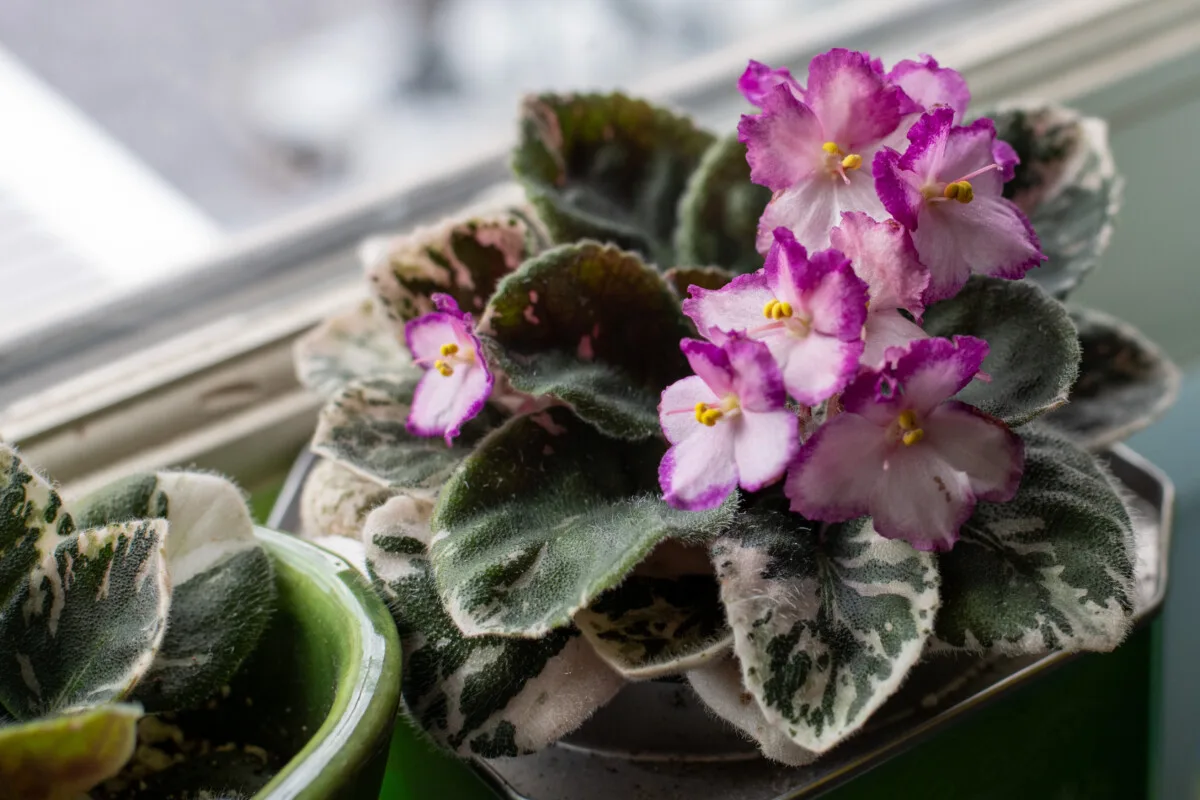
A plant’s life experience and adaptations are other considerations. Crops sheltered inside a greenhouse, for instance, would have a thinner and more porous leaf cuticle compared to the same crops grown outside in the field. Plants native to arid environments will have a thicker, waxier, and less permeable leaf cuticle than plants adapted to wetlands or rainforests.
8. Foliar Feeding with Micronutrients is More Efficient
Given how little is taken up through the leaves per application, foliar feeding is not a good sole source of nitrogen (N), phosphorus (P), and potassium (K). As primary macronutrients, NPK is needed in much larger quantities than any of the other nutrients, and it’s just not possible to satisfy a plant’s needs with nutrient sprays alone. Foliar applications of NPK are better used as a supplement or to temporarily relieve a deficiency.
The secondary macronutrients are calcium, magnesium, and sulfur, and these are needed in lesser quantities than NPK. But as with NPK, foliar feeding is insufficient to meet the entirety of the plant’s nutritional needs compared with root uptake. As foliar sprays, the secondary nutrients are best suited for treating deficiencies or to boost productivity during the plant’s critical growth stages, such as flowering and fruit set.
Compared to the macronutrients, only very trace amounts of micronutrients are required by plants. So little iron, zinc, manganese, boron, and copper are needed to fulfill plant needs that foliar feeding is – at last – a highly efficient method of fertilization.
Although micronutrient deficiencies are less common, they can crop up in alkaline soils. Where high pH ties up these trace metals and plants cannot take them up through the roots, micronutrient sprays can be used to supply them to plants quickly, at the right quantity, and in fewer applications to see results.
How to Use Foliar Feeding the Right Way

So to quickly recap: Foliar fertilizers are absorbed by teeny-tiny negatively-charged pores on the leaf surface. The leaves more readily take in positively-charged nutrients, but only small amounts at a time and only when the leaves are wet. Frequent nighttime applications of dilute nutrient solutions, tailored to a specific crop’s nutritional needs, have the greatest impact on harvest quality and yields.
Given its numerous limitations, foliar feeding isn’t a practical solution for providing all the essential nutrients your plants are going to need to grow big and strong. It’s not the most efficient way to serve up nutrients, but it absolutely can have a place as part of a specialized fertilization program.
Temporarily Fix Nutrient Deficiencies
When plants can’t take up nutrients from the soil – because of high soil pH or waterlogging – foliar feeding can be used as a stop-gap. It’ll buy you some time to correct soil problems while helping stop plants from succumbing to acute deficiencies in the meantime.
Target Critical Growth Stages
Applying foliar nutrients on new growth can improve color, appearance, quality, and yields of fruits and vegetables. To have the greatest effect, nutrient sprays must be timed precisely when nutrient demands are high – during vegetative branching and leaf development, when blooms have recently emerged, and when fruits are very small.

Use Organic Foliar Fertilizers
Leaf burn is less of a concern with organic fertilizers, since they typically have lower salt content. Plus, it’s cheap and easy to make your own foliar feeds from diluted urine (urea), liquid eggshells (calcium), and banana peel tea (potassium), for starters. Apart from being gentler, organic materials often contain humic acid, a natural chelating agent that assists with mineral absorption along the leaf surface.
Apply Foliar Fertilizers at Dusk or Early Evening
Because nutrients are better absorbed when leaves are wet, take advantage of overnight dew by spritzing plants in the evening when there is little to no wind. The darkness and cooler nighttime temperatures will help slow down evaporation and allow more time for nutrients to get taken up by the leaves.
Don’t Drench Plant Foliage
Dousing plants in liquid nutrients will cause much of it to run off the leaves and into the soil. For the best leaf absorption, turn your spray nozzle to a low-pressure mist. Tiny water droplets stay on the leaves better, and the smaller size makes it easier for the minuscule cuticle pores to take in.

Use Diluted Nutrient Solutions
To avoid damaging your plants, it’s safest to use weak nutrient sprays and apply them more frequently than concentrated solutions applied less often.
Always Do a Spot Test
Whether you’re using synthetic or organic foliar fertilizers, it’s wise to do test sprays on a leaf or two before applying it to the rest of the plants in the bed. One type of crop may respond differently than another, so always perform a test spray for each fruit or veggie you grow. Wait a week to see how the test leaves respond. If you see the signs of leaf burn, you’ll need to further dilute your nutrients.
Stick to the Readily Absorbed Nutrients
Nitrogen, potassium, magnesium, calcium, iron, manganese, zinc, copper, and boron are more easily absorbed through the leaf cuticle.
Which Crops Can Benefit from Foliar Fertilizers?

- Nitrogen: In general, most fruits and vegetables will respond to urea forms of nitrogen when there is a deficiency.
- Potassium: Fruiting crops – like tomatoes, melons, strawberries, grapes, and peaches – have a high potassium requirement and can benefit from foliar applications as a supplement to the soil.
- Magnesium: Supplemental magnesium is commonly used on crops more sensitive to a deficiency, such as tomatoes, melons, beans, and cucumbers.
- Calcium: To prevent or correct blossom end rot, foliar calcium can be sprayed on tomatoes, peppers, eggplant, squash, and melons when flowers have emerged and fruits are very small.
- Iron, Manganese, Zinc, Copper or Boron: These micronutrients are excellent for correcting local deficiencies in leafy greens like lettuce, spinach, kale, and collards.
